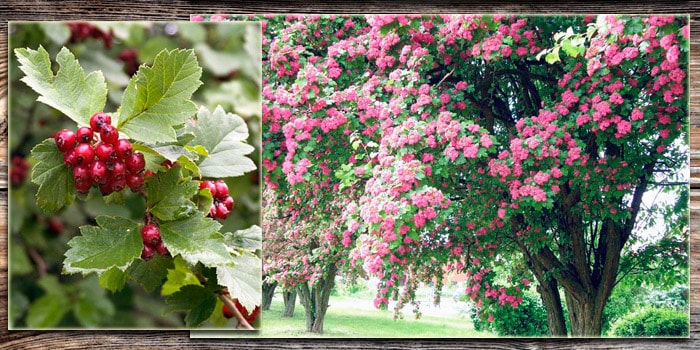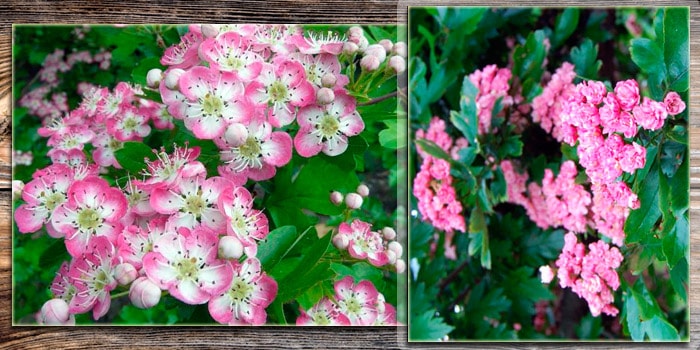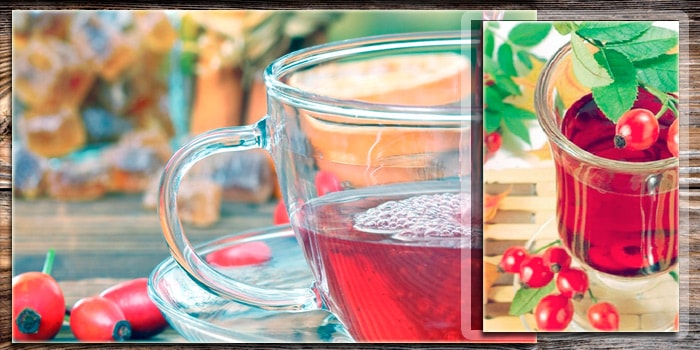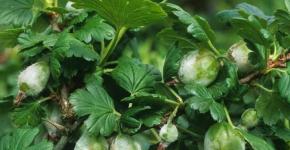Common hawthorn species: description, application
Common roach is a thorny shrub from the Rosaceae family, popularly known as boyarka, glod or gludina. It is found in the form of a tree with a height of 4-9 meters. It grows in the wild, in parks and gardens. About 160 species have been recorded. Inflorescences, fruits, leaves, bark contain active substances useful for the human body, due to which they are used in folk and official medicine.
Hawthorn in Latin is called Crataegus laevigata, belongs to the genus of deciduous shrubs. The plant has an asymmetric rounded crown, the branches have an olive-brownish tint, over the years the bark acquires a light ash color. Fresh shoots are covered with soft hairs, which subsequently disappear. The foliage is of the next type, the buds are ovoid. The leaves are three- and five-lobed, on petioles, the lower ones are solid, framed at the apex by denticles. On those shoots that do not bear fruit, they are larger and with a more pronounced dissection. The outer side of each leaf is a deep dark green color, the back is colored in a light tone, the veins are reticulate. The thorns of decorative and garden varieties of hawthorn are rare, 5-30 mm long, refer to homologous organs and are modified shoots.
Inflorescences are corymbose, pinkish or white, consist of 6-12 small buds, located on smooth pedicels. The berries are round or elongated, elliptical in shape, with a mealy pulp, reaching 0.7-1.5 cm in diameter. There are dark red, orange, less often yellow or brown tones. Inside there are bones - convex on one side, up to 7 mm in size, covered with grooves. The flowering period, depending on the region, lasts from May to June. The plant begins to bear fruit when it reaches the age of 7-15 years. The berries ripen in late August - early October. They have a sweet and sour tart taste and are edible.
Views
The shrub is widespread in the temperate zones of the northern hemisphere, easy to care for, unpretentious to soil, frost-resistant, tolerates drought well. The plant lives for 50-400 years. The following varieties are popular in horticulture:
- Rubra and Rosea Рlena - decorative species with fluffy pink and purple flowers, plants adapted to the southern regions of Russia;
- Crataegus sanguinea - in Russian - blood-red or Siberian hawthorn, firmly endures cold winters, healing properties are pronounced;
- Paul’s Scarlet (other variants of the name - Rosea Flore Pleno, Paul) - reaches 10 m in height, is unusually effective in blooming due to double carmine buds collected in umbrellas, but rarely bears fruit;
- Toba - represented by a tree 3-5 m, less often by a shrub, white flowers, which then turn pink, in one shield there are different-colored petals.
When choosing a variety, you need to take into account the characteristics of the region and climate. Brief characteristics of each species are presented in tables on the sites of nurseries.

Growing
In nature, the shrub reproduces in a generative way, with the help of seeds carried by birds, when passing through the digestive system of which natural scarification takes place. The adaptability and unpretentiousness of the hawthorn helps it survive in various conditions. For the reproduction of garden forms, the vegetative organs of the plant are used: cuttings, root shoots, layering. The vaccination method is widely used. The seedling is rooted in a permanent place at the age of two, in spring or autumn.
The plant prefers sunny areas and moderately moist, fertile soil with high-quality drainage, although it takes root on poor soils. It is advisable to protect young plantings from the cold in winter. For best fruiting, regular fertilization is required. The hawthorn tolerates cutting well, has a wide root system, sharp needles, intensively releases shoots, due to which it is suitable for the formation of hedges and decorative groups in landscape design. Thorns must be preserved - their removal provokes plant diseases.
Chemical composition
The fruits, leaves and flowers of the shrub contain biologically active substances, which are represented by:
- flavonoids (quercetin, herbacetin, apigenin, hyperoside);
- glycosides (vitexin, orlentin, saponaretin);
- organic acids (ursolic, oleanolic, caffeic, citric, chlorogenic, crateholic);
- vitamins A, C, E, K;
- macro- and microelements (potassium, calcium, magnesium, iron, zinc);
- fatty and essential oils, tannins, pectin.
The rich composition made hawthorn the basis for a number of pharmacological preparations. The plant is non-toxic and has a minimal number of contraindications.
Beneficial features
The healing effect of products based on fruits, flowers and leaves is due to the influence of flavonoids, acids and other components. Hawthorn has the following qualities:
- dilates blood vessels, tones the heart muscle, stabilizes blood pressure;
- calms the nervous system, relieves stress, normalizes night sleep;
- lowers cholesterol levels, prevents the formation of atherosclerotic plaques;
- cleans blood vessels, strengthens their walls, improves blood flow, fights against pathogenic microflora;
- due to antispasmodic action relieves headaches;
- stimulates the elimination of toxic substances and heavy metal salts;
- relieves symptoms of diseases of the digestive system, improves metabolic processes;
- gives a moderate diuretic and choleretic effect, helps to remove puffiness;
- raises the level of immune defense.
Extract from berries is used in cosmetology, increasing skin tone, preventing inflammation, accelerating the processes of cell regeneration and renewal.

Collection and storage rules
For harvesting, flowers and fruits of the plant are used. The berries are harvested in the fall, starting at the end of September. After the first cold weather, the astringent taste partially disappears, such raw materials are suitable for freezing and sugaring. The beneficial properties of the fruit with this method retain up to six months. When drying at home, use an oven heated to 50-60 degrees. Then the raw materials are poured into bags made of dense fabric, glass jars, boxes lined with parchment paper.
The buds are harvested in sunny weather in May - early June, when the hawthorn blooms. Dry in shaded, well-ventilated rooms, spreading out in a thin layer and regularly turning over. For harvesting, berries and flowers of blood-red hawthorn, common, five-pistillate hawthorn are used.
In order to avoid mistakes during collection, it is important to pay attention to the sepals: in a bush-like bush, there are no more than two buds in the inflorescence, and small hairs are visible along the veins. Some recipes include bark, which is harvested by cutting off young branches when the hawthorn begins to sap.
Application
The shrub is used in medicine for the preparation of tinctures, decoctions, healing elixirs. It is also useful to use fresh berries, which are distinguished by pleasant taste. However, it is important to observe moderation - if the dosage is violated, there is a high risk of a sharp drop in pressure and indigestion. The use of drugs with hawthorn extract is indicated in conditions such as:
- 1st and 2nd stages of hypertension, cardiac disorders, heart attacks and strokes;
- tachycardia, mild arrhythmia;
- sleep disorders, neuroses;
- chronic stress, irritability, anxiety;
- gastritis, flatulence, liver and biliary tract pathologies;
- the recovery period after illnesses;
- abnormalities in the functioning of the thyroid gland.
Herbal medicine and homeopathy offer recipes using flowers, berries, leaves and plant bark. Cooked decoctions should be consumed within 24 hours, the value of alcoholic tinctures lies in the ability to maintain healing properties for 2-3 years.
Fruit
Frozen or dried berries are the basis for medicinal drinks. A tablespoon of crushed raw materials is steamed with 200 ml of boiling water, left to brew for 60 minutes under a lid. Filtered, drunk 2-3 times a day, 100 ml each. Juice is prepared from freshly harvested fruits after freezing: 500 g of washed and mashed berries are poured with half a glass of water and heated to 40 degrees. The mass is wrung out through cheesecloth, the resulting liquid is removed to the refrigerator. According to other recipes, the leaves of this shrub are also added during the manufacture. Take 3 times a day for a large spoon.
Hawthorn juice increases the body's resistance to seasonal colds, strengthens the heart muscle, and is the prevention of age-related atherosclerosis. Fresh fruits serve as a filling for delicious pies, they are used to make jam, compotes. However, you should not consume more than 150 g of berries per day, even if there are no health problems.

Flowers
To prepare a tincture, 20 g of dried raw materials are poured in 200 ml of alcohol or vodka. Put in a dark, cool place for 21 days, then filter and take 20 drops 3 times a day for hypertension, insomnia, nervous strain. A water infusion will have a similar effect. For 600 ml of liquid, take three tbsp. l. crushed flowers. Leave for 12 hours, heat and keep on low heat for five minutes after boiling. After waiting for cooling, filter. They drink 200 ml in the morning.
Bark and leaves
Used to prepare a decoction, which is taken for diarrhea, fever, shortness of breath, dizziness and hot flashes against the background of menopause. According to reviews, the remedy on the bark helps to prevent varicose veins and thrombophlebitis. The leaves, collected in June - July, have a pleasant smell; fresh they are added to salads. Dried ones are used for the preparation of blood-purifying tea, medicinal flower and fruit broths.
Contraindications and side effects
When taking hawthorn products, it is important to stick to the recommended dosages. It is undesirable to use herbal medicines in the following cases:
- children under 12 years of age;
- pregnancy and the period of breastfeeding;
- individual intolerance, food allergy to the constituent substances;
- acute pathologies of the gastrointestinal tract;
- severe hypotension, bradycardia;
- performing work that requires quick reaction and high concentration of attention.
To avoid unpleasant side effects, drugs with hawthorn are not drunk on an empty stomach, as this can cause nausea and stomach pain. Treatment lasts 2-4 weeks, before starting a new course, an interval of 10-14 days is required. Constant use disrupts the work of the heart, provokes arrhythmia, pressure surges. Hawthorn enhances the effect of antihypertensive drugs, so before you start taking it, it is important to agree on the dosage with your doctor.


